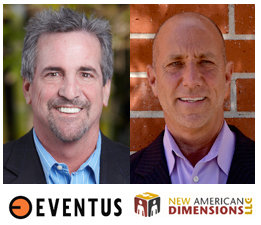‘Latinx’ And Gender Inclusivity
 Latinx was originally formed in the early aughts as a word for those of Latin American descent who do not identify as being of the male or female gender or who simply don’t want to be identified by gender. More than likely, there was little consideration for how it was supposed to be pronounced when it was created. Nevertheless, people have attempted to assign some pronunciations to it. The most common way to pronounce Latinx is the same way you would Spanish-derived Latina or Latino but pronouncing the “x” as the name of the English letter X. So you get something like \luh-TEE-neks\.
Latinx was originally formed in the early aughts as a word for those of Latin American descent who do not identify as being of the male or female gender or who simply don’t want to be identified by gender. More than likely, there was little consideration for how it was supposed to be pronounced when it was created. Nevertheless, people have attempted to assign some pronunciations to it. The most common way to pronounce Latinx is the same way you would Spanish-derived Latina or Latino but pronouncing the “x” as the name of the English letter X. So you get something like \luh-TEE-neks\.


 The world’s most valuable brands have seen their total brand value increase by 5.9% despite the economic, social and personal impacts of COVID-19, according to the 2020 BrandZTM Top 100 Most Valuable Global Brands ranking released by WPP and Kantar. The total brand value of the Top 100 global brands reached US$5 trillion, equivalent to the annual GDP of Japan. It has increased by 245% since 2006, when the total brand value first reached US$1 trillion.
The world’s most valuable brands have seen their total brand value increase by 5.9% despite the economic, social and personal impacts of COVID-19, according to the 2020 BrandZTM Top 100 Most Valuable Global Brands ranking released by WPP and Kantar. The total brand value of the Top 100 global brands reached US$5 trillion, equivalent to the annual GDP of Japan. It has increased by 245% since 2006, when the total brand value first reached US$1 trillion. When was the last time you reconsidered your approach to consumer monitoring? Your usual methods of tracking consumer trends may work well under typical, everyday market conditions—but these are not everyday market conditions.
When was the last time you reconsidered your approach to consumer monitoring? Your usual methods of tracking consumer trends may work well under typical, everyday market conditions—but these are not everyday market conditions. When it comes to Latinos, there is no shortage of audio consumption among our community. As we are about to see, the same is true for podcast listening. The irony, however, is in the shortage of resources available to the Latino podcasting market. This strong consumption — paired with a lack of research – merits a formal look into the podcast listening terrains of the Latino listening world. This is exactly one reason why we teamed up with leaders in the audio space to conduct a study that will provide insights into the podcast listeners and non-listeners of our often simplified, but truly complex, ethnic group.
When it comes to Latinos, there is no shortage of audio consumption among our community. As we are about to see, the same is true for podcast listening. The irony, however, is in the shortage of resources available to the Latino podcasting market. This strong consumption — paired with a lack of research – merits a formal look into the podcast listening terrains of the Latino listening world. This is exactly one reason why we teamed up with leaders in the audio space to conduct a study that will provide insights into the podcast listeners and non-listeners of our often simplified, but truly complex, ethnic group. It’s a bit of a business this blogging lark. You write a piece on Facebook and the various companies who have decided in one shape or form to pull funds from the platform, only for Mark Zuckerberg to change the rules thus rendering out-of-date most of what I’d written. If you see him, have a word with him for me, would you? Thanks. By Brian Jacobs
It’s a bit of a business this blogging lark. You write a piece on Facebook and the various companies who have decided in one shape or form to pull funds from the platform, only for Mark Zuckerberg to change the rules thus rendering out-of-date most of what I’d written. If you see him, have a word with him for me, would you? Thanks. By Brian Jacobs United by their mutual skepticism about attempts to define “Total Market,” indeed wary of the concept itself, Pedro de Córdoba / Eventus and David Morse / New American Dimensions began a regular correspondence via e-mail and text about a month ago. The following is a distillation. [We previously published this article on 4/25/2015 and is worth republishing]
United by their mutual skepticism about attempts to define “Total Market,” indeed wary of the concept itself, Pedro de Córdoba / Eventus and David Morse / New American Dimensions began a regular correspondence via e-mail and text about a month ago. The following is a distillation. [We previously published this article on 4/25/2015 and is worth republishing] In the aftermath of George Floyd’s death, most of us are trying to understand how to honor this critical moment in our country and evolve. The consequences are many and will continue to impact us as individuals, and as business leaders. By Isaac Mizrahi – Co-President of ALMA
In the aftermath of George Floyd’s death, most of us are trying to understand how to honor this critical moment in our country and evolve. The consequences are many and will continue to impact us as individuals, and as business leaders. By Isaac Mizrahi – Co-President of ALMA ‘The Agency of the Future’ gets a lot of attention in the press and at industry conferences. ‘The Agency of the Future’ partners with its clients, solves brand problems through enhanced creativity, provides digital/integrated solutions, attracts the best industry talent, and competes with consulting firms. It is a wonderful dream that will be realized only if ‘The Agency of Today’ is fixed. This is not happening. By Michael Farmer
‘The Agency of the Future’ gets a lot of attention in the press and at industry conferences. ‘The Agency of the Future’ partners with its clients, solves brand problems through enhanced creativity, provides digital/integrated solutions, attracts the best industry talent, and competes with consulting firms. It is a wonderful dream that will be realized only if ‘The Agency of Today’ is fixed. This is not happening. By Michael Farmer Before and since COVID-19 hit, consumers loaded up on paid media subscriptions and sampled free services. As costs, competition, and subscription fatigue grow, their choices today could shape the industry for the next decade.
Before and since COVID-19 hit, consumers loaded up on paid media subscriptions and sampled free services. As costs, competition, and subscription fatigue grow, their choices today could shape the industry for the next decade. Corporate America has played an important role in the progress of LGBTQ+ rights over the past two decades, with many companies making public gestures of support. Hundreds of major consumer brands have become regular sponsors of annual Pride events. A record 206 major corporations signed an amicus brief in the spring advocating for the Supreme Court’s June 2020 decision protecting LGBTQ+ individuals from workplace discrimination. Companies are also increasingly making business-critical decisions about recruitment practices, employee-resource groups, and marketing that embrace LGBTQ+ rights.
Corporate America has played an important role in the progress of LGBTQ+ rights over the past two decades, with many companies making public gestures of support. Hundreds of major consumer brands have become regular sponsors of annual Pride events. A record 206 major corporations signed an amicus brief in the spring advocating for the Supreme Court’s June 2020 decision protecting LGBTQ+ individuals from workplace discrimination. Companies are also increasingly making business-critical decisions about recruitment practices, employee-resource groups, and marketing that embrace LGBTQ+ rights. For our recent McKinsey Global Survey on the topic, we approximated inclusion by combining survey respondents’ reported feelings of authenticity, belonging, and comfort participating in the workplace. Our survey research finds that respondents of all backgrounds encounter barriers to feeling included—and that women, respondents who are ethnic and racial minorities, and those who identify as LGBTQ+ encounter additional challenges.
For our recent McKinsey Global Survey on the topic, we approximated inclusion by combining survey respondents’ reported feelings of authenticity, belonging, and comfort participating in the workplace. Our survey research finds that respondents of all backgrounds encounter barriers to feeling included—and that women, respondents who are ethnic and racial minorities, and those who identify as LGBTQ+ encounter additional challenges. The approaches Aetna, Anheuser-Busch, IBM, and others take to keep their teams’ marketing capabilities sharp
The approaches Aetna, Anheuser-Busch, IBM, and others take to keep their teams’ marketing capabilities sharp The June 2020 U.S. mid-year forecast is marked by declines in consumer and advertising spend across the board. The COVID pandemic sharply transformed the economic expectations from growth as recently as mid-March to the worst economic decline since the peak of the Great Depression in 1932. That’s according to consensus data as of mid-May tracked by Refinitiv that called for a 5.7% inflation-adjusted decline in economic activity.
The June 2020 U.S. mid-year forecast is marked by declines in consumer and advertising spend across the board. The COVID pandemic sharply transformed the economic expectations from growth as recently as mid-March to the worst economic decline since the peak of the Great Depression in 1932. That’s according to consensus data as of mid-May tracked by Refinitiv that called for a 5.7% inflation-adjusted decline in economic activity. Walton Isaacson CEO says a ‘seemingly benign idea’ has turned into ‘a brutal affront to our communities’
Walton Isaacson CEO says a ‘seemingly benign idea’ has turned into ‘a brutal affront to our communities’ Four weeks ago when most America when into lockdown, marketers worried about the future of their marketing to mom campaigns. What they soon discovered however was that homebound moms searching for products, educational tools and entertainment created opportunities for sales growth. [A great blueprint for the US Hispanic advertising, marketing, media, public relatins and research Industry]
Four weeks ago when most America when into lockdown, marketers worried about the future of their marketing to mom campaigns. What they soon discovered however was that homebound moms searching for products, educational tools and entertainment created opportunities for sales growth. [A great blueprint for the US Hispanic advertising, marketing, media, public relatins and research Industry] Radio provides consumers with a reassuring presence in challenging times
Radio provides consumers with a reassuring presence in challenging times According to a 700 media and advertising professionals conducted just prior to Covid-19 and Black Lives Matter activism, 43% of Black, Hispanic/Latino and Asian professionals in the advertising and media business agreed that the industry is doing its best to advance diversity, equality and inclusion. By comparison, 60% of Caucasian professionals in our community agreed. Only 12% of white people in the ad/media business believed current efforts are insufficient vs. 35% of Blacks, 31% of Hispanics/Latinos and 21% of Asians. The remaining group offered no opinion.
According to a 700 media and advertising professionals conducted just prior to Covid-19 and Black Lives Matter activism, 43% of Black, Hispanic/Latino and Asian professionals in the advertising and media business agreed that the industry is doing its best to advance diversity, equality and inclusion. By comparison, 60% of Caucasian professionals in our community agreed. Only 12% of white people in the ad/media business believed current efforts are insufficient vs. 35% of Blacks, 31% of Hispanics/Latinos and 21% of Asians. The remaining group offered no opinion.
























